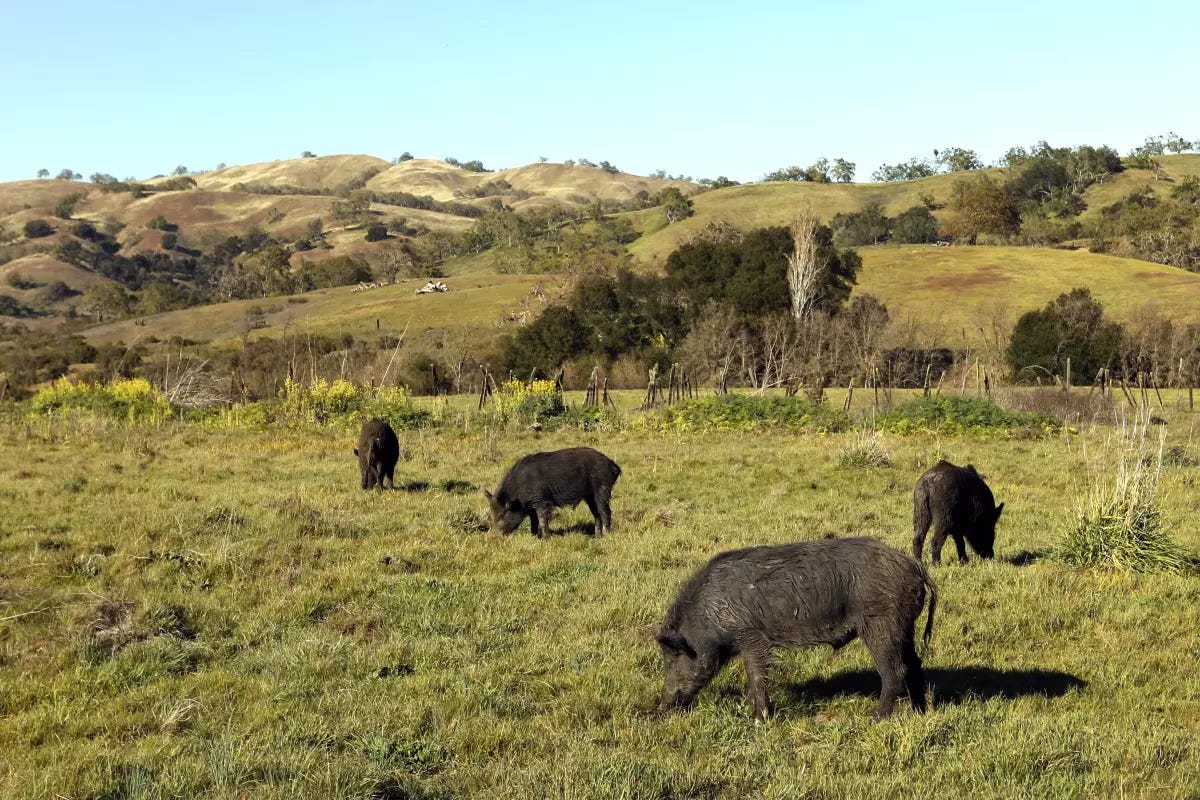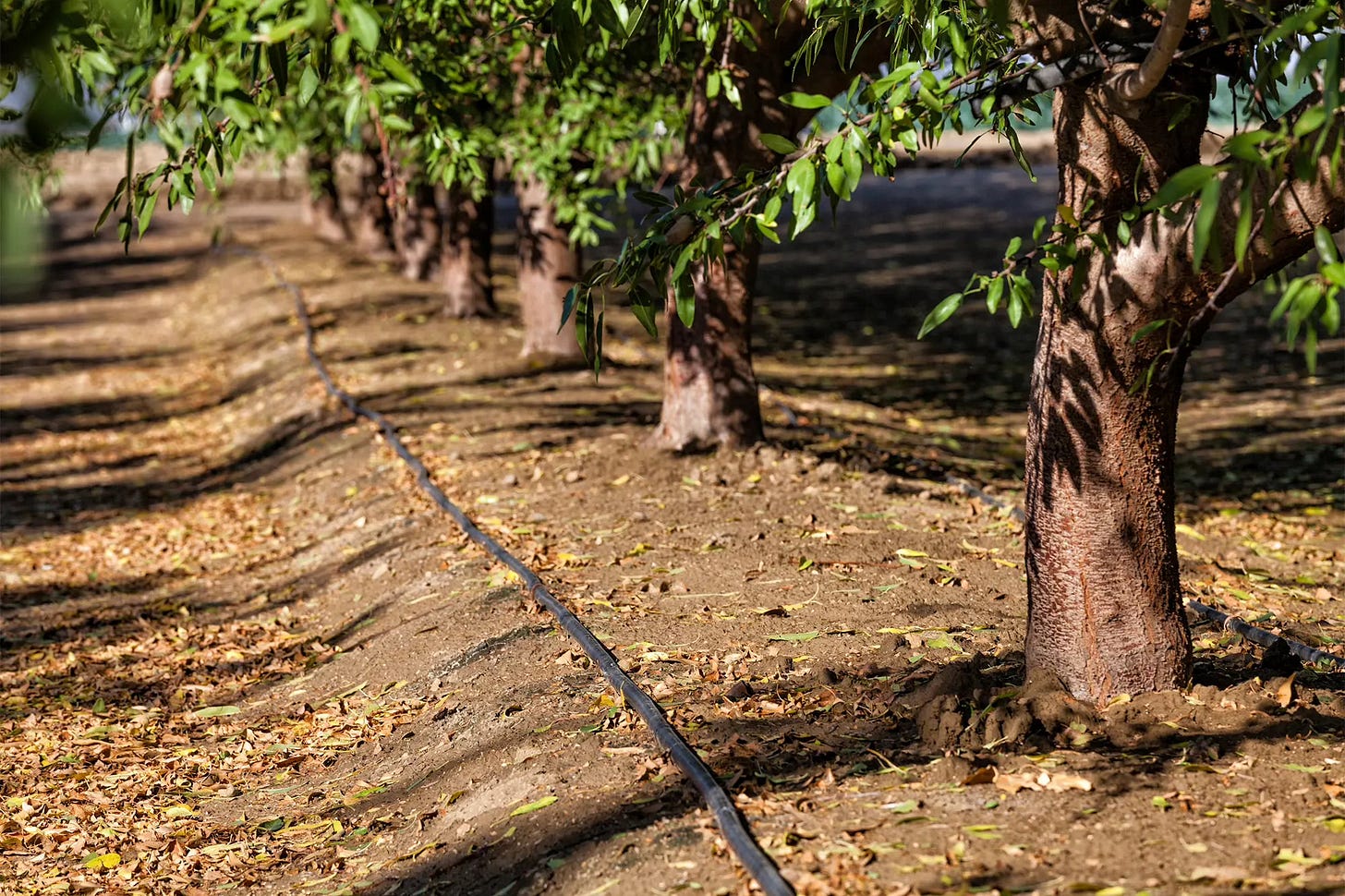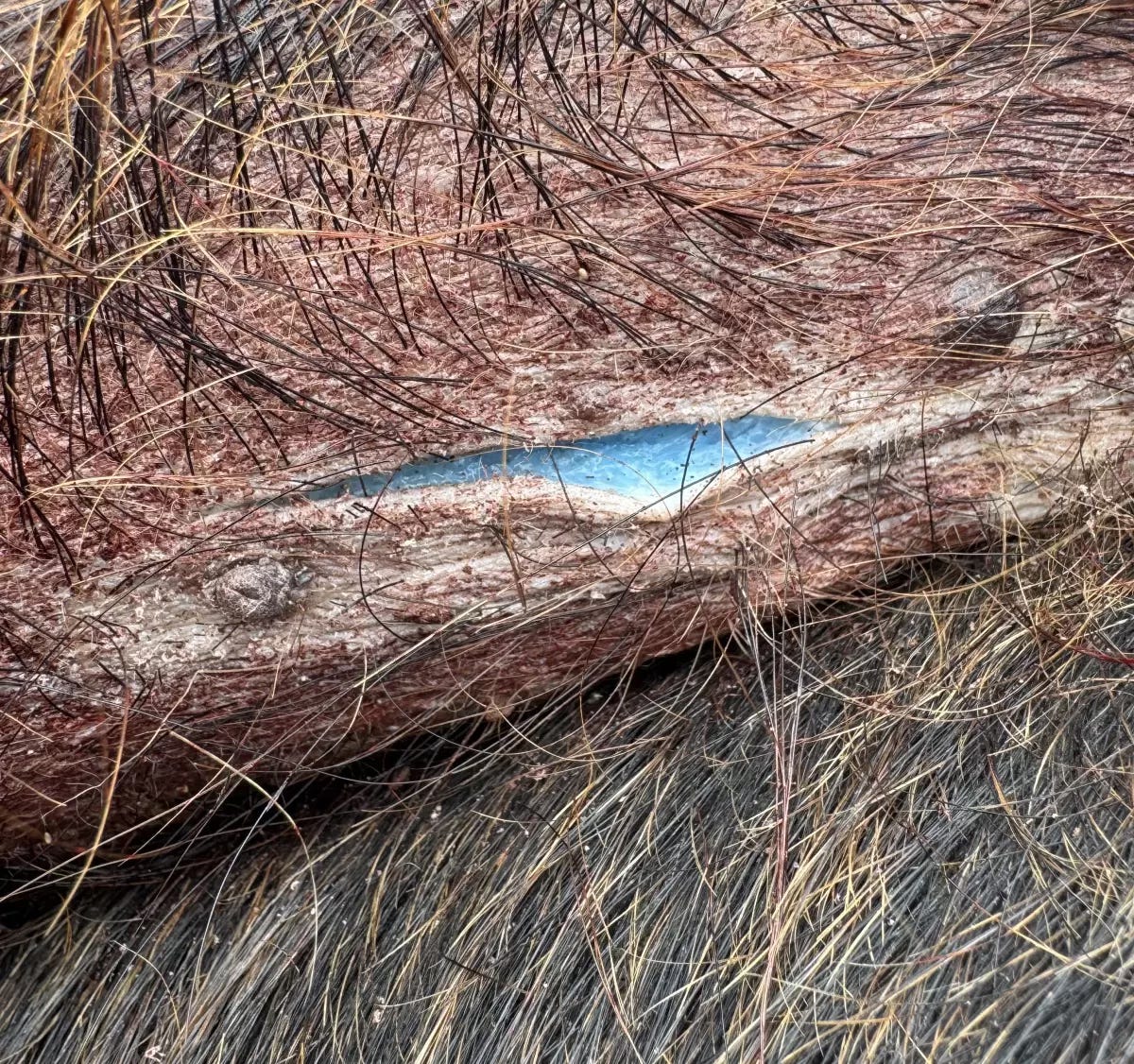From Orchards to the Coast: How a Rat Rodeo in the Central Valley Turned Wild Pigs Blue
An unprecedented rodent infestation in the Central Valley’s almond belt is spilling toxins into Monterey County’s wild pigs—turning their meat neon blue and exposing a hidden agricultural crisis.
In recent months, California’s agricultural and wildlife worlds have collided in an unexpected—and alarming—way. Massive rat infestations across almond orchards in the Central Valley are not just destroying crops; they may also be turning wild pig meat neon blue in neighboring Monterey County. This is more than a curious anecdote—it’s a warning about the unintended consequences of pest control.
A "sea of rats" is infesting our food supply.
Since fall 2024, a massive rodent outbreak has swept over more than 100,000 acres of almond orchards in the Central Valley—spanning Fresno, Merced, Kings, and Kern counties. Reports estimate economic damage at $109 million to over $310 million, including costly drip-line replacements, yield losses, and infrastructure repairs.
Roof rats—formerly arboreal—are now burrowing underground, particularly in orchards with limited winter ground cover, making them nearly impossible to track using traditional methods.
What’s Fueling the Rat Surge?
1. Abandoned Orchards: Pest Magnet
The wave of abandonments—driven by drought impacts, groundwater restrictions (under SGMA), and unprofitable operations—has left tens of thousands of acres unmanaged. These neglected orchards now serve as safe havens for rodents, letting populations breed unchecked and spill over into neighboring productive blocks.
2. Dry Winters: Ground Cover Evaporates
A combination of multiyear drought, possibly influenced by modes like the PDO and atmospheric shifts, has thinned winter vegetation. With little ground cover, roof rats have shifted to burrowing—creating hard-to-reach nests that evade conventional control efforts.
3. Waterways: Rodent Superhighways
Irrigation canals and water infrastructure are inadvertently serving as express corridors for rat movement. This connectivity allows them to colonize orchards rapidly, quickly overwhelming control measures.
4. Policy Inertia: Too Little, Too Slow
Existing regulations require county ag commissioners to issue liens to tackle abandoned orchards—a process that’s costly, slow, and burdens county budgets. Without swift action, these pest havens remain unaddressed. Efforts like Assembly Bill 732 aim to introduce per-acre fines ($500–1,000) for noncompliant landowners—but it hasn’t yet become law.
Why Are Orchards Being Abandoned?
California is one of the most anti-farming and ranching states in the Union. Due to an anti-farming agenda the number of farms dropped from 81,033 in 2007 to 63,134 in 2022. From 2017 to 2022, the state lost 7,387 farms, a 10.5% decline and more than double the loss of farms in the state of Washington. So, approximately 7,400 farms were lost in just those five years (2017–2022), and overall, around 18,000 farms fewer in the 15-year span from 2007 to 2022.
1. Economic Challenges: Low Prices, High Costs, Debt Pressures
Almond prices have dropped significantly—from nearly $4 per pound a decade ago to about $2 or less—while production costs remain high, especially for heavily financed farms. This has led to bankruptcies and growers walking away from orchards that no longer produce profitably.
Low returns combined with rising input costs (e.g., labor, water, maintenance) have turned almond farming unviable for many. This has driven both removal and abandonment of orchards—particularly in Fresno and Kern counties.
2. Scarce and Expensive Water
Sustainable Groundwater Management Act (SGMA). Passed in 2014, SGMA mandates sustainable use of groundwater by 2042, particularly affecting high- and medium-priority basins. It requires the establishment of Groundwater Sustainability Agencies (GSAs) and the filing of comprehensive Groundwater Sustainability Plans (GSPs). The Public Policy Institute of California estimates SGMA could render up to 750,000 acres of farmland—including almond orchards—unusable.
In 2024, roughly 66,000 acres were removed, and an additional ~30,000 acres were abandoned—figures tied to water scarcity and high farming costs.
3. Trade & Market Uncertainty
California almond growers export about 75–80% of their crop. Escalating tariffs—especially from China—and the looming threat of new trade conflicts introduce uncertainty and risk to profitability.
Retaliatory tariffs in past trade wars led to massive losses; ongoing volatility puts long-term orchard investments in doubt.
4. Regulatory Pressures
While no direct policies mandate orchard removal, water restrictions and regulations aimed at managing groundwater and conservation indirectly push some growers out. The strain from legal and financial water compliance adds pressure.
Sustainable Groundwater Management Act (SGMA) as mentioned above.
Marketing Order No. 981 Amendments. In May 2024, California’s federal Marketing Order No. 981 (which regulates almond production and marketing) was updated. Changes included definitions for “almond biomass,” modifications to election schedules for the Almond Board of California, and streamlined volume regulation recommendations to the USDA. These administrative updates modernize how almond growers engage with federal marketing programs, potentially affecting how they manage biomass utilization and participate in industry governance.
Neon Blue Meat in California’s Wild Pigs: The Alarming Sign of a Bigger Problem
In the agricultural heart of California, hunters and wildlife trappers have stumbled upon a disturbing sight: wild pigs with muscle and fat tinted a vivid, unnatural blue. The culprit isn’t a strange new disease or genetic quirk — it’s a powerful rodenticide called diphacinone, laced with blue dye and intended to kill pests like ground squirrels.
The discovery has set off alarms among wildlife officials, food safety experts, and environmentalists, not only for what it means about human exposure, but for what it reveals about the scale of both rodenticide use and California’s exploding wild pig population.
Source of the Blue – The California Department of Fish and Wildlife (CDFW) confirmed the blue hue comes from diphacinone, a chronic anticoagulant poison. The colorant is added so workers can easily identify bait, but in this case, the dye migrated directly into the pigs’ tissues after they consumed the poison.
How Pigs Get It – Wildlife trapper Dan Burton, who first reported the phenomenon, says pigs are tearing open agricultural bait stations intended for rodents. Once they find them, they return repeatedly — and in some cases, entire herds have been contaminated.
Spread Across the Region – Affected pigs have been found in multiple parts of South Monterey County and along the Salinas River corridor, suggesting contamination isn’t isolated. On one property, every single pig checked had blue tissue.
The Wild Pig Problem
The poisoning incident also exposes another long-running issue: California’s wild pigs are out of control.
Invasive and Prolific – Wild pigs (a hybrid of domestic swine and Eurasian boar) are non-native and have been spreading across the state for decades. With few natural predators and high reproductive rates — a sow can birth two litters of 4–12 piglets a year — populations can double in under a year.
Widespread Impact – They cause hundreds of millions of dollars in damage annually in the U.S., tearing up crops, pastures, and native habitats. In California, they also compete with native wildlife for food and spread diseases like leptospirosis, brucellosis, and toxoplasmosis.
Difficult to Control – Pigs are smart and adaptable. Hunting helps but rarely makes a dent unless it’s highly coordinated. Some areas resort to large-scale trapping and even aerial gunning, but populations continue to rise.
How These Events Connect
1. Dye-Tainted Bait Means Visible Contamination
Rodenticides like diphacinone are dyed blue so they’re easily identifiable. When pigs consume the bait—or eat contaminated rodents—the dye accumulates in muscle and fat tissue, making the “blue meat” unmistakable.
2. Agricultural Use Is the Loophole
Though California banned many uses of anticoagulant rodenticides in 2024, agricultural operations remain exempt. This means farms in and around the rat‑infested zones can legally use diphacinone, maintaining opportunities for unintended spread.
3. Landscape-Scale Dynamics
The rat infestation zone—anchored in the San Joaquin—lies upstream and east of Monterey. Wild pigs, which range far and feed opportunistically, can encounter bait stations or poisoned prey along waterways and corridors, especially as disturbed habitats intersect.
Health and Ecological Implications
Hunters and consumers: CDFW advises not consuming meat from blue‑tinged pigs—and to remain cautious even if discoloration isn’t apparent, as contamination can exist without visible signs.
Wildlife at risk: Secondary exposure has been detected in wild pigs (8.3%), bears (83%), and other predators like mountain lions and condors—suggesting a widespread food‑chain threat.
Solutions & Response
Improved pest management in orchards—like tamper‑resistant bait stations, targeted trapping, burrow fumigation, and surveillance to limit spillover.
Policy action: Faster cleanup of abandoned orchards could reduce rodent reservoirs and limit toxin use.
Hunter outreach: Clear guidelines for meat processing, awareness campaigns, and mandatory reporting of blue tissue.
Environmental protection: Consider non‑anticoagulant options or ed implement integrated pest management to safeguard non‑target species.
Conclusion
This crisis reveals how interconnected our agricultural and natural ecosystems are. A rodent outburst in almond groves may have triggered a colorful—and potentially dangerous—ripple effect in coastal wildlife. The “blue meat” pig is more than an oddity; it's a symbol of “ecological leakage” on a regional scale. Addressing it demands collaboration across growers, wildlife agencies, policymakers, and hunters—before more of the food chain turns blue.







